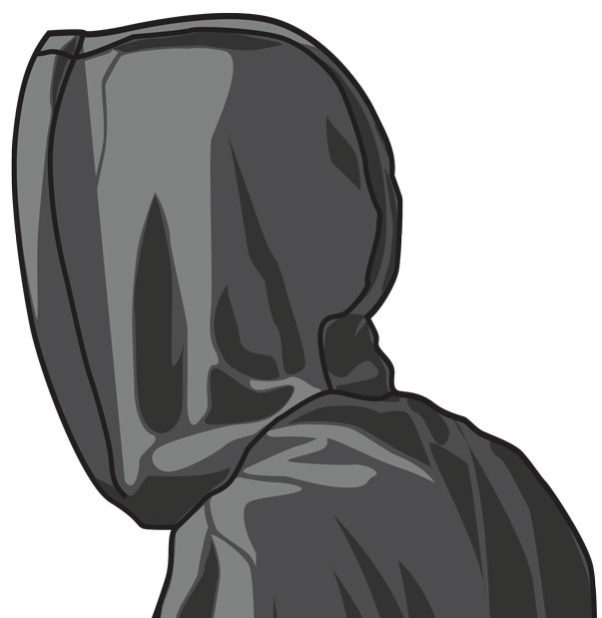
When did the hood become associated with troublemakers? Turns out it was at least 900 years ago, when London was plagued by young, unsupervised apprentice boys during the 12th century.
By Anjel Ramirez
One of the most common articles of clothing today is the hoodie, yet few people know it has a long and curious history.
A hoodie, also called a hooded sweatshirt, often includes a muff sewn onto the lower front, a hood, a drawstring to adjust the hood opening, and it may have a vertical zipper down the center similar to a windbreaker-style jacket.
The garment’s form can be traced back to Medieval Europe when everyday clothing for monks included a long, decorative hood called a cowl attached to a tunic or robe, and a chaperon or hooded cape was very commonly worn by outdoor workers.
The hooded sweatshirt was produced in the United States starting in the 1930s. The modern clothing style was first manufactured by Champion and marketed to laborers who endured freezing temperatures while working in upstate New York. The term hoodie entered popular usage in the 1990s.
The hoodie took off in the 1970s, with several factors contributing to its success. Hip-hop culture developed in New York City around this time. High fashion also contributed during this era, as Norma Kamali and other high-profile designers embraced and glamorized the new clothing style. Most critical to the hoodie’s popularity during this time was its iconic appearance in the blockbuster film Rocky.
Today, this garment is worn by everyone from infants to grandparents, yet it still suggests an outcast status — so much that it has been banned by some schools and nightclubs.
Hip-hop trendsetters used the hoodie to cloak and isolate themselves, and this lent it a somewhat sinister appeal. The hooded sweatshirt can work much like a cobra hood, pulled up to intimidate others. But even more important is its ability to create a shroud of anonymity. This came in handy for at least two types of people operating in hip-hop’s urban breeding ground: graffiti writers and muggers. Wearing a hoodie meant you were keeping a low profile, and perhaps up to something illegal.
When did the hood become associated with troublemakers? Turns out it was at least 900 years ago, when London was plagued by young, unsupervised apprentice boys during the 12th century. Often rioting over some political or religious issue, they typically wore hoods to hide their identities. At the time, hoods were common among law-abiding folks as well, but they were especially emblematic of young hooligans.
The hood is a millennia-old accessory, and its long history has led to both positive and negative associations. Hoods can be a symbol of piety, honor, and respect. Ancient Romans pulled part of their togas over their heads during prayer. People who have earned advanced degrees are “hooded” as part of the graduation ceremony. Cloistered Catholic monks often wear hooded robes.
And so the hoodie manages a balance somewhere between defiance and comfort, though that mainly reflects its roots. Sometimes a hoodie is just soft and warm.
- In Photos: Fiestas Patrias 2025 - September 25, 2025
- The two-party system is failing us. - October 19, 2024
- Read our Fall 2023 Print: Vol. 100 No. 1 - October 23, 2023











